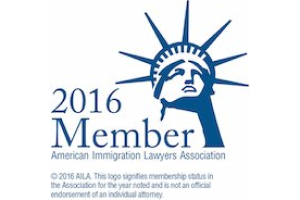MEET THEIR IMMIGRATION NEEDS
Family-Based Immigrant Visas

A foreign national who has been granted permission by the United States government to live and work permanently in the United States is known as a lawful permanent resident. A lawful permanent resident is also sometimes referred to as a green card holder.
Under United States law, many relatives of United States citizens and lawful permanent residents are eligible to apply for immigrant visas and become lawful permanent residents. Under the Immigration and Nationality Act, there are two basic categories of relatives eligible to apply for immigrant visas: (1) immediate relatives of United States citizens; and (2) preference relatives.
Immediate Relatives of United States Citizens
This category refers to:
- Spouses of United States Citizens;
- Unmarried minor children (under 21 years of age) of a United States citizen; and
- Parents of a United States Citizen (if the child is at least 21 years of Age).
Immediate relatives of United States citizens have special immigration priority over other individuals seeking family-based immigrant visas. There is an unlimited number of visas for immediate relatives of United States citizens. Therefore, they can apply for a visa without having to wait for a visa to become available.
Preference Relatives
Preference relatives consist of the following for categories:
First Preference (F1): Unmarried children of a United States citizen at least 21 years of age.
Second Preference (F2): Spouses and unmarried children of lawful permanent residents.
Third Preference (F3): Married children of United States citizens.
Fourth Preference (F4): Siblings of United States citizens (if the United States citizen is at least 21 years of age).
Individuals falling into one of these four preference relative categories are allowed to have derivative beneficiaries also become lawful permanent residents. Derivative beneficiaries consist of spouses and unmarried children under 21 years of age.
The United States places a yearly limit on the number of visas issued for each preference relative category. In addition, United States law limits the number of immigrant visas available by country. Therefore, in some cases it can take several years to get a green card, or in some cases, considerably longer, if an individual comes from a country which has a high demand for United States immigrant visas.
When an immigrant visa is not immediately available, each approved immigrant visa petition is placed in chronological order according to the date that the visa petition was originally filed with U.S. Citizenship and Immigration Services. This date is known as the priority date. The U.S. Department of State, publishes a monthly Visa Bulletin which shows the priority dates by preference category and by country for which green cards are being issued that month. If you are outside of the United States, you must wait for your priority date to become current to enter the United States as a permanent resident through consular processing. If you are currently already living in the United States, you must wait for your priority date to become current before you will be able to apply to become a permanent resident through adjustment of status (Form I-485).
Speak to an Experienced Immigration Lawyer Today
If you or someone you know is interested in obtaining a family-based immigrant visa, attorney Daniel Hartzman and the Hartzman Law Firm are here to help. Attorney Hartzman is an experienced immigration lawyer who has helped many clients obtain lawful permanent resident status. To learn more about how Hartzman Law Firm can assist you in obtaining a family-based immigrant visa, please call us at (412) 495-9849 or fill out a contact form online. We offer free consultations in person, by phone, and by secure video conferencing. Weekend consultations are also available by request.
Call us! We are here to help you!




